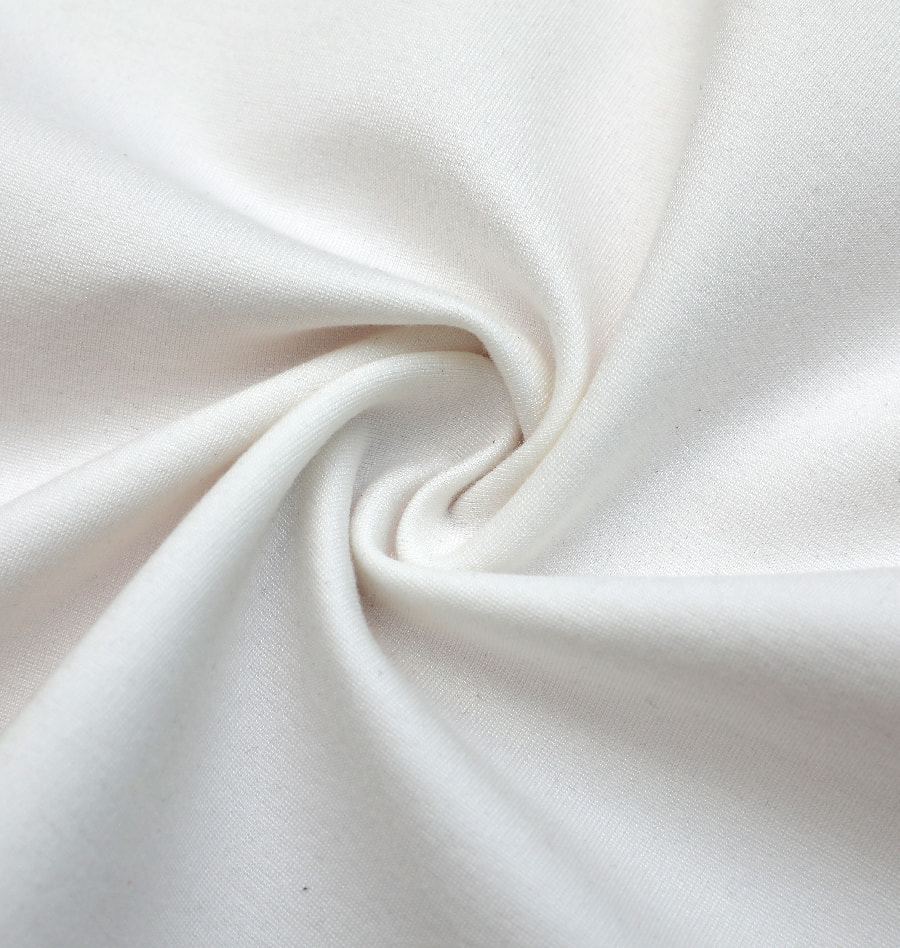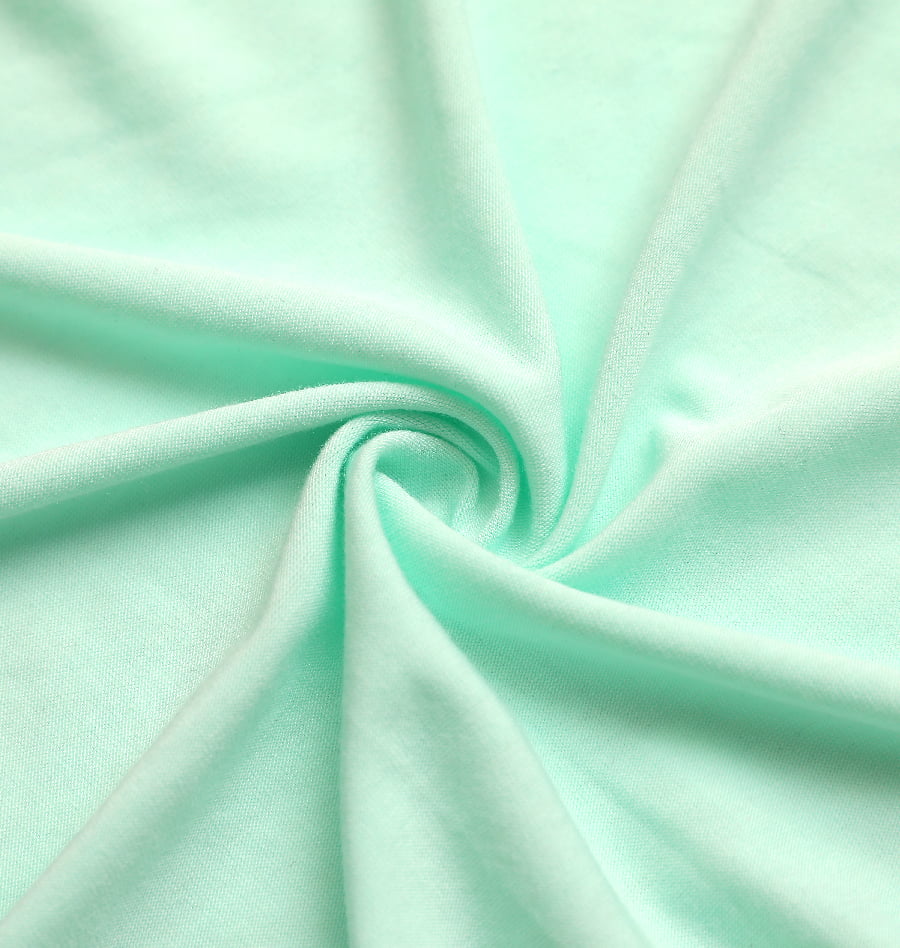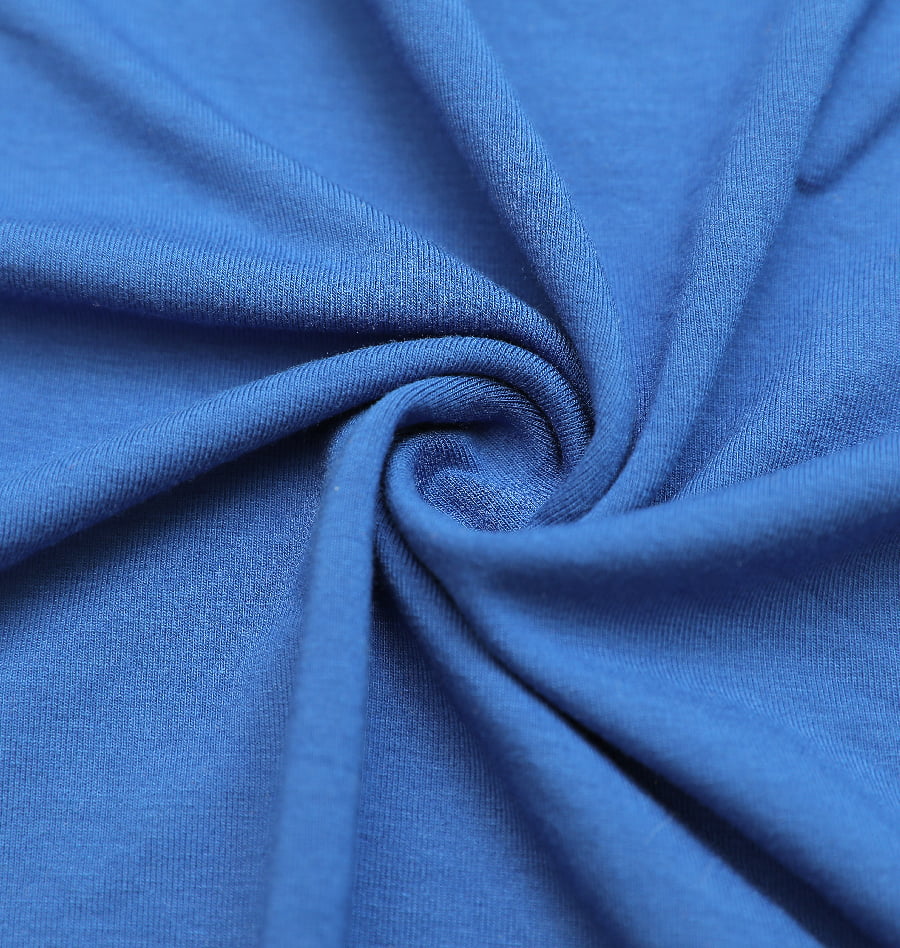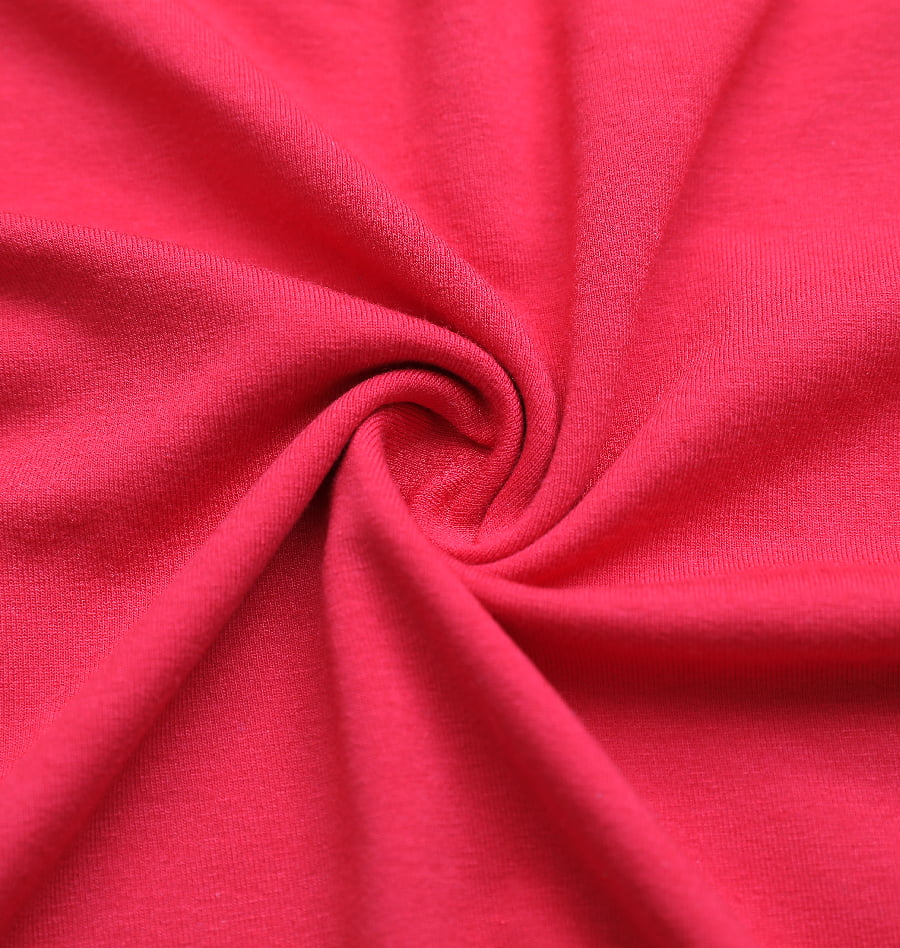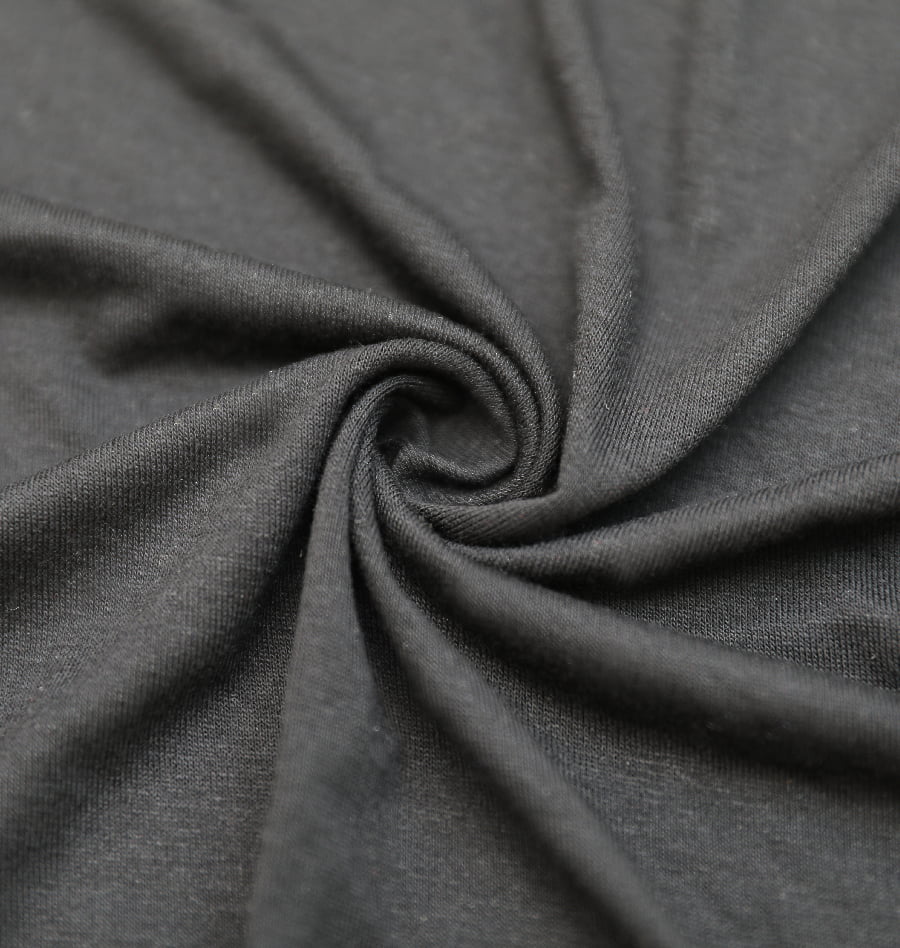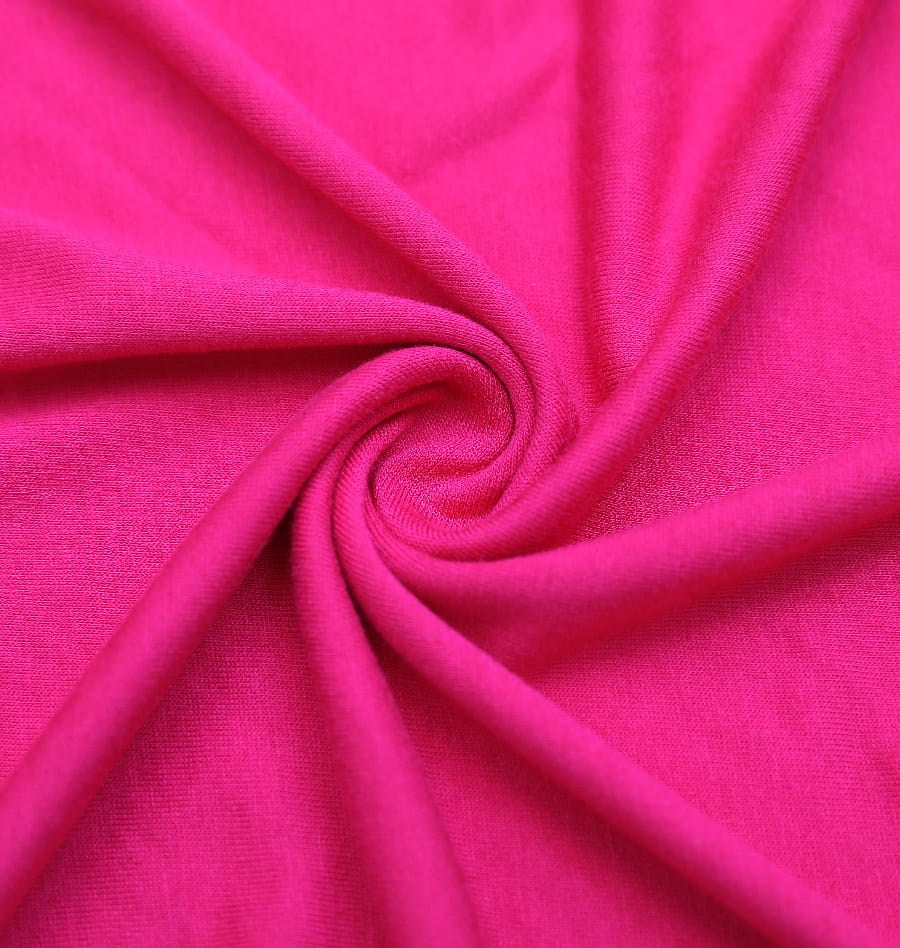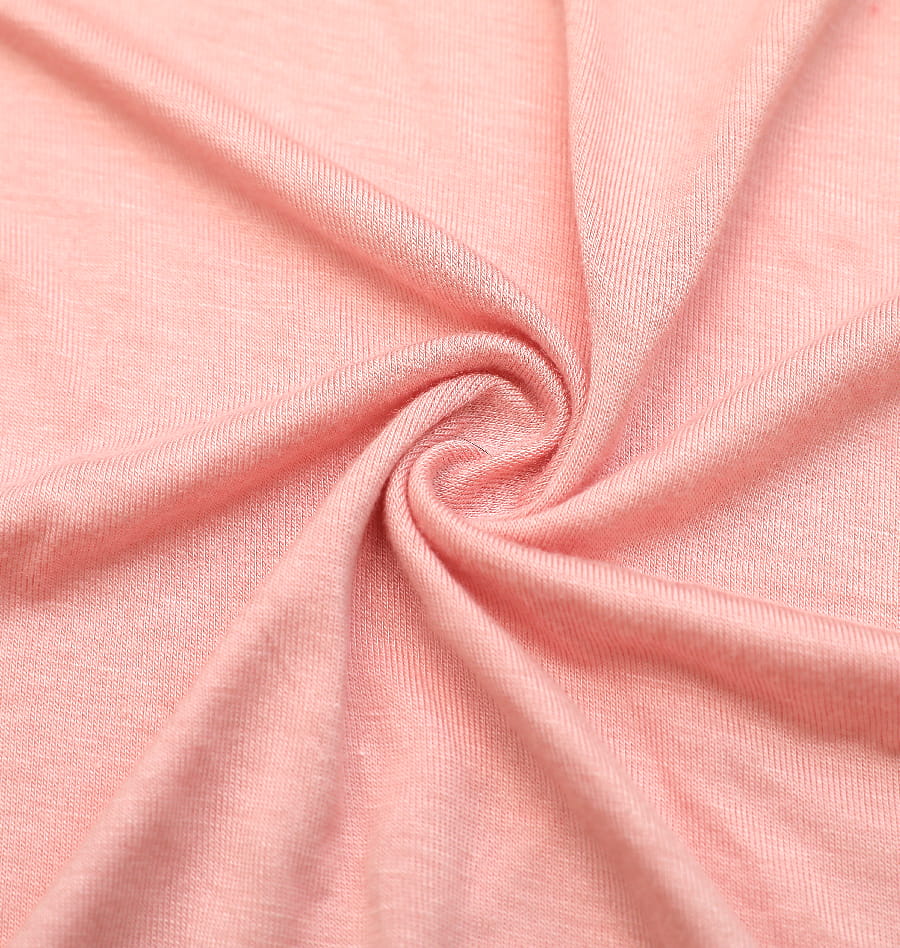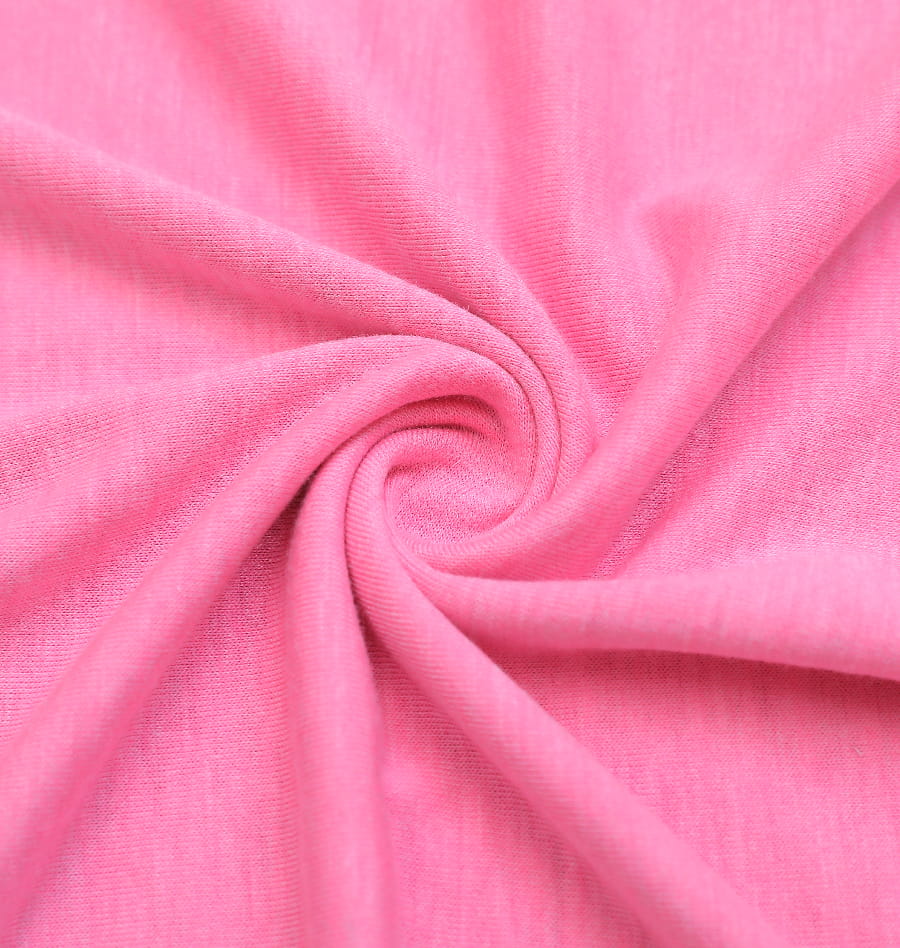Introduction to Single Jersey Fabric:
Single Jersey Fabric is a popular and versatile knitted fabric used in various industries for its unique characteristics and performance. As a factory, manufacturer, supplier, or company producing Single Jersey Fabric, understanding its key features and applications, as well as the impact of fiber content on its properties, is crucial to cater to diverse market needs. Below, we explore the characteristics of Single Jersey Fabric and its applications, and then delve into how the choice of fiber content influences its performance in different end uses.
Characteristics of Single Jersey Fabric:
Single Jersey Fabric is a type of weft-knitted fabric that is widely recognized for its smooth and comfortable feel. It is produced on a single set of needles, resulting in a plain, vertical structure on one side and a horizontal structure on the reverse side. The fabric exhibits a distinct property called "wales," which are the columns of stitches running in the lengthwise direction. Some key characteristics of Single Jersey Fabric include:
1. Stretch and Recovery:
Single Jersey Fabric offers excellent stretch and recovery properties. It has the ability to stretch horizontally, making it comfortable to wear and suitable for body-hugging garments.
2. Breathability:
The knitted structure of Single Jersey Fabric allows air to flow through the loops, providing good breathability. This makes it a suitable choice for lightweight and breathable clothing items.
3. Versatility:
Single Jersey Fabric is highly versatile and can be manufactured using various fiber types, allowing for a wide range of applications in the fashion, sportswear, and home textile industries.
4. Softness and Comfort:
The smooth surface and softness of Single Jersey Fabric make it comfortable to wear next to the skin. It is commonly used for creating everyday clothing items like T-shirts, tops, dresses, and underwear.
Applications of Single Jersey Fabric:
Single Jersey Fabric finds extensive use in a variety of end applications due to its versatile nature and desirable characteristics. Some common applications include:
1. Apparel:
Single Jersey Fabric is a popular choice for creating various types of apparel, including T-shirts, tank tops, leggings, skirts, dresses, and loungewear. Its softness, stretch, and breathability make it comfortable for everyday wear.
2. Sportswear and Activewear:
In the sportswear and activewear industry, Single Jersey Fabric is used for creating performance-oriented clothing items like athletic tops, shorts, and compression garments. Its stretch and moisture-wicking properties enhance comfort and mobility during physical activities.
3. Home Textiles:
Single Jersey Fabric is also used in home textiles, such as bed sheets, pillowcases, and lightweight blankets. Its breathability and softness make it suitable for providing comfort in bedding products.
4. Underwear and Intimate Apparel:
The comfortable and stretchy nature of Single Jersey Fabric makes it an excellent choice for creating underwear, bras, and other intimate apparel.
Impact of Fiber Content on Performance:
The choice of fiber content significantly influences the performance and properties of Single Jersey Fabric. Different fibers offer distinct characteristics that cater to specific end uses. Some common fiber choices for Single Jersey Fabric include:
1. Cotton:
Cotton is a widely used fiber for Single Jersey Fabric due to its softness, breathability, and comfort. Cotton Single Jersey is a popular choice for everyday clothing items and undergarments.
2. Polyester:
Polyester is known for its durability, moisture-wicking properties, and ability to retain shape. Polyester Single Jersey is commonly used in sportswear and activewear, where moisture management and resilience are essential.
3. Rayon and Modal:
Rayon and modal fibers offer a luxurious drape and soft feel, making them suitable for creating elegant and comfortable clothing items.
4. Blends:
Blending different fibers in Single Jersey Fabric allows manufacturers to combine the beneficial properties of each fiber. For example, a cotton-polyester blend may offer a balance of softness and durability, making it suitable for casual wear.
Conclusion:
Single Jersey Fabric is a versatile and widely used knitted fabric with distinctive characteristics like stretch, breathability, and comfort. Its applications span across apparel, sportswear, activewear, home textiles, and intimate apparel. The choice of fiber content in Single Jersey Fabric plays a vital role in determining its performance and properties for specific end uses. Cotton provides softness and comfort, polyester enhances durability and moisture-wicking, and blends allow manufacturers to customize the fabric to meet various market demands.
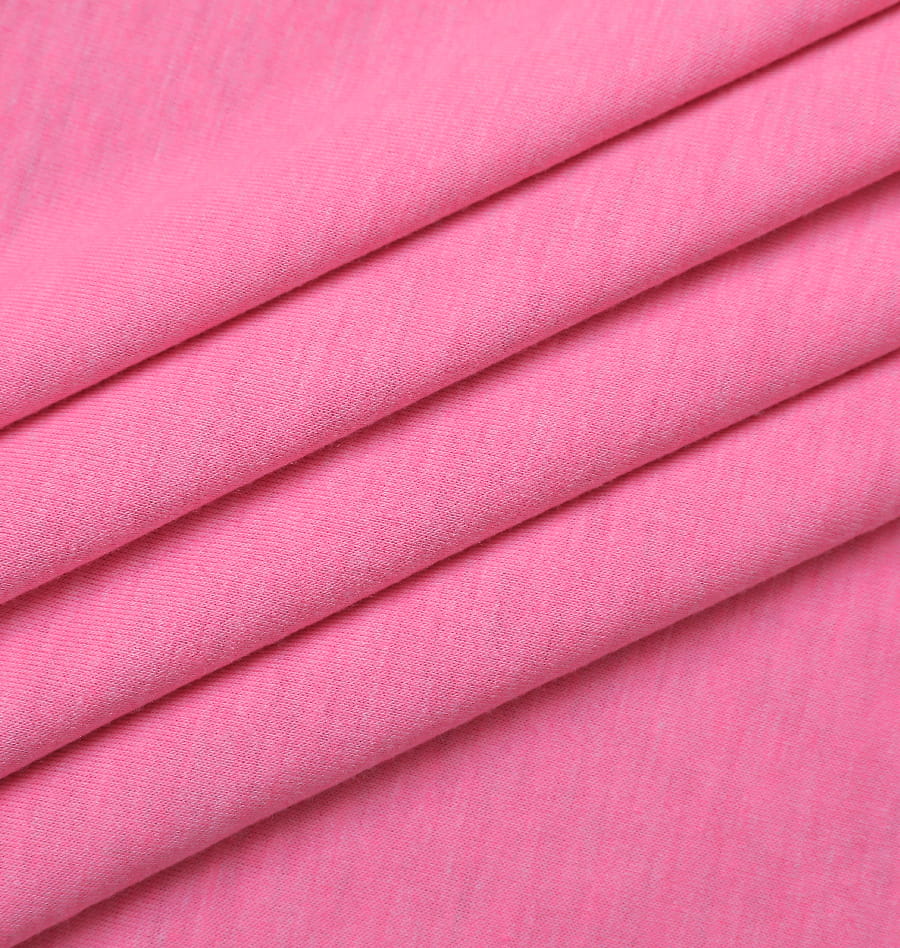
30s TR ring spinning single jersey fabric D11027-A-20

30s TR ring spinning single jersey fabric D11027-A-20

